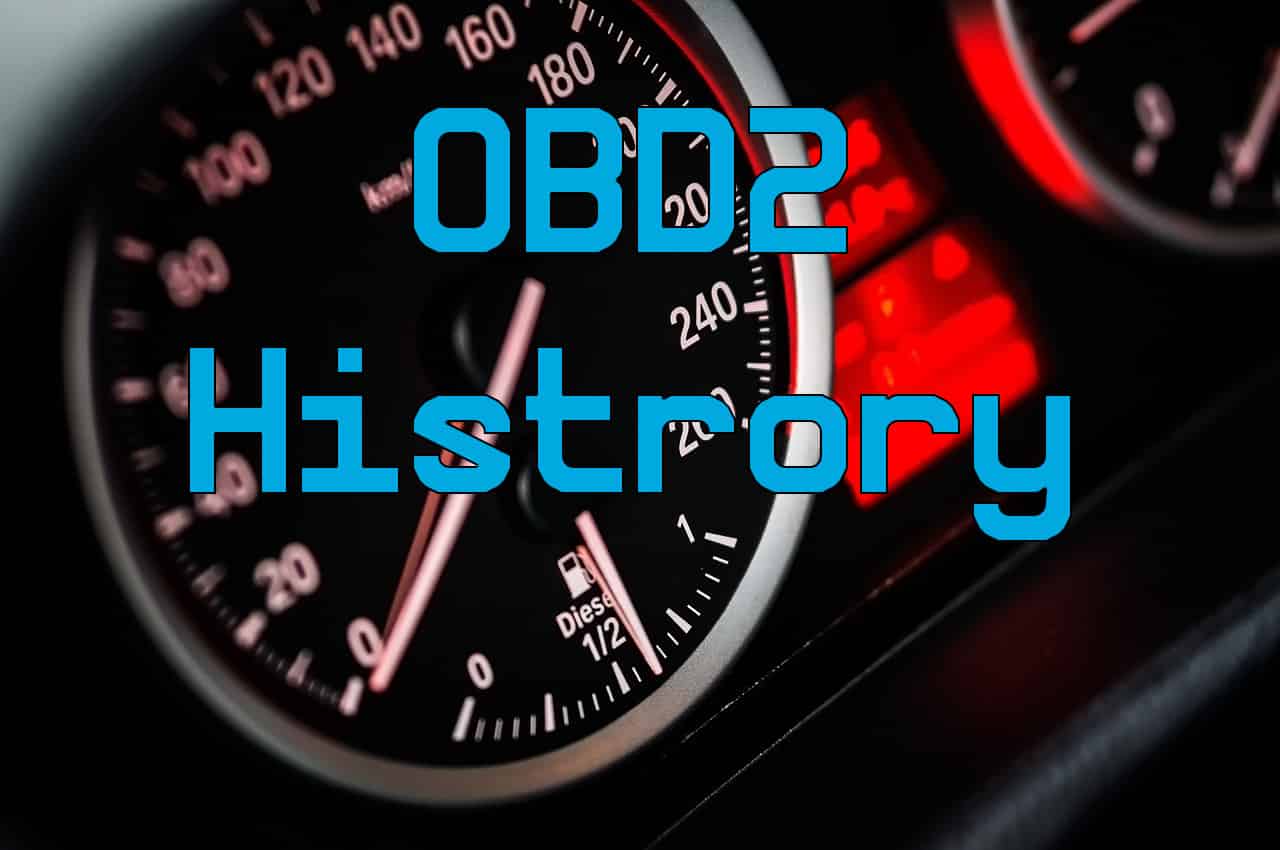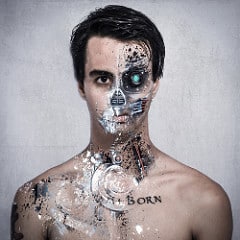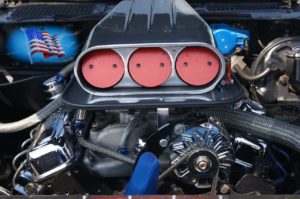Mike here with ScannerAnswers – today we’re talking about the history of OBD2 and answering the question, “when did OBD2 start?” OBD2 (On-Board Diagnostics) started in the year 1996 and became a standard on vehicles produced until today (it’s 2019 when I’m writing this).
Read on to learn to learn about the protocol and how it’s been helping mechanics fix cars ever since!

So what is OBD2, or, On-Board Diagnostics?
If you are new to cars, the word ‘OBD2’ may sound like the prototype version of a humanoid robot from outer space. For those who know a little bit something about cars, OBD2 refers to the ECU or computer box in a vehicle. The OBD2 port is utilized as a self-diagnostic and reporting tool of the engine ECU.

But for a large majority of car owners, OBD2 simply refers to the bothersome check engine light or MIL (malfunction indicator lamp) on the console. When the check engine light turns ON, the usual procedure is to keep driving and bring the vehicle for servicing immediately. The technician will whip out a fancy OBD2 scan tool to determine the cause of the check engine light.
Yes, it all sounds too complex. But OBD2 was primarily conceptualized to monitor vehicle emissions. The OBD2 system will illuminate the check engine light or MIL whenever the emissions exceed 1.5 times the FTP (Federal Test Procedure) standards.
But was OBD2 the father of all monitoring systems? Here is a brief history of OBD2 along with some useful facts along the way.
What year did OBD2 start?
OBD2 was introduced on all 1996 and newer model year passenger cars and light trucks sold in the United States.
However, early versions of OBD or on-board diagnostics will simply illuminate the malfunction indicator light and will not provide additional information. Think of it this way: you will know when something is wrong with the system, but you don’t know the exact nature of the problem.
In today’s modern cars, you simply hook up an OBD2 scanner in the OBD2 port and press a couple of buttons to determine the fault code/trouble code and the definition of the code. The modern OBD2 system on modern cars will make it easy for technicians and the average car owner to diagnose the source of the check engine light.
The direct answer to ‘what year did OBD2 start?’ is 1996. Plain and simple. The first batch of OBD2-compliant vehicles in 1996 can detect air leakages in the sealed fuel system, random misfires, and certain faults in the EGR or Exhaust Gas Recirculating system. The MIL will also illuminate whenever a sensor or emissions control device is malfunctioning.
History of OBD2

Contrary to popular belief, OBD2 (or OBD1 for that matter) is not the first on-board diagnostics system.
The proud distinction of being the very first to use some sort of on-board monitoring can be attributed to Volkswagen in 1968. It was the year when the German automaker introduced the Volkswagen Type 3 E. This is the first production German automobile equipped with electronic fuel injection.
Then, the Japs entered the frame. The Datsun 280Z was introduced in 1978 and was fitted with on-board computers to provide real-time tuning of the fuel-injection system. I guess it was pretty similar to the handheld vehicle tuners we have today. The car also came with the Bosch L-Jetronic fuel injection system mated to a powerful 2.8-liter inline-six engine.
Next came General Motors. The American car company was testing and implementing a protocol for testing the ECM or engine control module on the assembly line. GM called it the ALDL or Assembly Line Diagnostic Link. The ALDL protocol was implemented for 1980 model year vehicles sold in California. ALDL also became standard for the rest of the vehicles sold in the US in 1981.
All of this was well and good, but most of the protocols were developed to monitor two main pollutants: HC/hydrocarbons and CO/carbon monoxide. However, the lenient nature of the testing protocols were developed to minimize failures. This led to an alarming number of vehicles that pass emissions testing even with high concentrations of pollutants passing through the tailpipe.
The solution was the new I/M 240 protocol. However, the testing procedure is expensive and would require testing each vehicle on a dynamometer to monitor emissions at certain engine speeds.
Sadly, only the state of Colorado supported the I/M 240 protocol after the system was shortly implemented in Maine. The overall cost and severe complexity of the testing procedures failed to garner public acceptance.
The Introduction of OBDI

It is clear something needs to be done. The year was 1988. The CARB or California Air Resources Board decided to implement new regulations to improve air quality. It stated all vehicles sold in California starting in 1988 will need to be equipped with an on-board diagnostic system to monitor and detect abnormalities on the vehicle emissions system.
Hence, OBDI was born. It was a simple on-board diagnostics system that can monitor the engine control module or ECM, EGR system, fuel delivery system, and the oxygen sensor.
But there’s a problem: OBDI lacked the standardization required to fulfill the needs of vehicles from different makes and models. This means you need specialized adaptors or scanners to access the OBDI system on different vehicles.
In fact, some of the OBDI systems can only be accessed using expensive dealer-specific scanning tools. This is bad news for the average car buyer.
There are more problems with OBDI. The system is unable to detect engine misfires or problems with the evaporative emissions system. Adding insult to injury is the inability to detect problems with the catalytic converter. This means you can remove the catalytic converter altogether (for racing or high-performance applications) without triggering a check engine light or MIL.
The Genesis of OBD2
Again, something needs to be done to address the shortcomings of OBDI. It was in 1989 that CARB or the California Air Resources Board proposed a new set of standardization protocols to develop an all new OBD system.
The new OBD system will be equipped with a standardized 16-pin DIL or data link connector. Each pin will be assigned specific functions along with standardized protocols and standardized trouble codes. They called it OBDII.
The new OBDII standard was implemented in 1994. Various auto makers were given until 1996 to comply with the OBD2 protocol for all vehicles sold in California.
But the next-generation OBD was not strictly implemented in California alone. The Federal Clean Air Act of 1990 required all 49-state vehicles to be OBD2-compliant starting in the 1996 model year.
What differentiates OBDI from OBD2?
The OBD2 system is more comprehensive. The standardized design also means all vehicles can be diagnosed using a 16-pin OBD2 scanner. No need to use specialized equipment!
OBD2-compliant vehicles are also equipped with twice the number of oxygen sensors located upstream and downstream of the catalytic converter. OBD2 is equipped with more powerful 16-bit or 32-bit powertrain modules for added computing power. The system also comes with sequential fuel injection and includes a MAF sensor and MAP sensor to monitor airflow and engine load.
Best of all, OBD2 is equipped with EEPROM or Electronically Erasable Programmable Read Only Memory chips. This allows the ECU to be reprogrammed or updated with new software using your laptop computer.
What were the first production vehicles equipped with OBD2?
The list includes the 1994 Chevrolet Corvette, Buick Regal 3800 V6, Toyota Camry V6, Lexus ES300, and Toyota T100 pickup with the 2.4-liter four banger.
Also included are the 1995 Chevrolet T-Series pickups, Chrysler Neon, Dodge Stratus, Nissan 240 SX, and Nissan Maxima.
What to do if the check engine light comes ON
The most important thing to remember is NOT to panic. Remember that your car can still be driven even when the check engine light is ON.
- Try to slow down and park the car as soon as it is safe to do so. Check the gauges for signs of malfunction or overheating. Check the temperature gauge, the low oil pressure gauge, and the idling speed in the tachometer. If you notice rough idling, it is best to bring the car to the nearest service center.
- It is also a good idea to check the gas cap. Did you know a loose gas cap can trigger a check engine light? This also holds true for older cars equipped with a faulty, loose, or dilapidated gas cap.
- You can try to fix the problem if you have an OBD2 scanner at your disposal. You can buy a wired or wireless OBD2 scanner for around $20 or $50. This is not bad especially if you have more than one vehicle in your household. Make sure to fix the source of the problem instead of just erasing or resetting the trouble code.
But if you are wary about fiddling with the OBD2 port in your vehicle, it is best to bring the vehicle to the dealership to diagnose and erase the trouble codes. This especially holds true for newer cars that are still under warranty.
Which OBD2 scanner Should I buy for my vehicle?
If you’re the type of person that likes fixing your own car or tinkering, then you’ll be happy to know that you can get an OBD2 adapter for around $20 bucks. We personally love the wireless (bluetooth or wifi) scanners that connect to your phone simply because they’re cheaper and more conveniant than the old school wired SnapOn scanners. Here’s a couple links to get you started:
- https://scanneranswers.com/obd2-iphone-scanner-wifi-code-readers/
- https://scanneranswers.com/best-obd2-scan-tool-for-android/
Conclusion
All 1996 and newer vehicles are OBD2 compliant. If you are in the market for an OBD2 scan tool, make sure to buy a device that is compatible with all known OBD2 protocols. This will allow you to use a single scan tool to diagnose and fix different brands of vehicles.